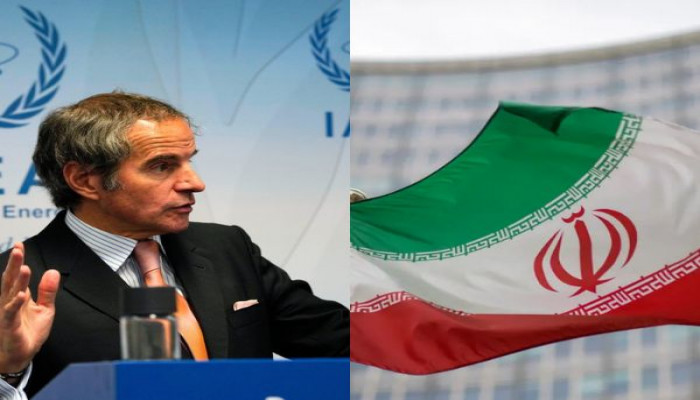Iran conducted undeclared nuclear activities at three secret sites: IAEA report
- In Reports
- 08:00 PM, May 31, 2025
- Myind Staff
Iran secretly conducted nuclear work using undeclared material at three locations, the U.N. nuclear watchdog said in a lengthy and classified report to member states. These sites had been under investigation for years.
The International Atomic Energy Agency (IAEA) drafted this "comprehensive" report after the agency’s 35-nation Board of Governors requested it in November. The report set the stage for the United States, Britain, France, and Germany to push the board to find Iran in breach of its non-proliferation obligations.
Such a resolution would anger Iran. It would also complicate nuclear talks between Tehran and Washington.
Relying on the IAEA report’s findings, the four Western nations planned to submit a draft resolution. Diplomats said they intended the board to adopt it during its next meeting in the week of June 9. If it passed, it would mark the first formal non-compliance finding against Iran in nearly 20 years.
Tehran stated that it sought to develop nuclear technology for peaceful purposes. It denied long-standing accusations from Western powers that it aimed to build nuclear weapons.
While many of the findings involved decades-old activities that had surfaced before, the IAEA report drew clearer and more definitive conclusions. It summarised recent developments and pointed more directly to coordinated, secret activities, some of which were relevant to producing nuclear weapons.
The report said Iran’s cooperation remained “less than satisfactory” in “a number of respects.” The IAEA still awaited explanations from Iran regarding uranium traces detected years ago at two of four sites under review. The agency found that three of the sites hosted secret nuclear experiments.
The IAEA concluded that “these three locations, and other possible related locations, were part of an undeclared structured nuclear programme carried out by Iran until the early 2000s and that some activities used undeclared nuclear material.”
Iran stored nuclear material and/or heavily contaminated equipment from that program at the fourth site, Turquzabad, between 2009 and 2018, the report said.
The report stated, “The Agency concludes that Iran did not declare nuclear material and nuclear-related activities at three undeclared locations in Iran, specifically, Lavisan-Shian, Varamin, and Turquzabad.”
At Lavisan-Shian in Tehran, Iran used a uranium metal disc “in the production of explosively-driven neutron sources” at least twice in 2003. The process aimed to initiate the explosion in a nuclear weapon. The report said the tests were “small-scale.”
Diplomats said the report could lead to Iran being referred to the U.N. Security Council, though that step would likely take place at a later IAEA board meeting.
In the near term, the report was expected to cause Iran to accelerate or expand its fast-developing nuclear program, as it had done in response to earlier board rebukes. It could also further complicate talks with the United States.
A separate IAEA report sent to member states on Saturday said Iran’s stockpile of uranium enriched up to 60% purity had increased by about 50%, reaching 408.6 kg. If enriched further, that amount could fuel nine nuclear weapons, based on an IAEA yardstick.
Both IAEA reports described enrichment to that level as “of serious concern.” Iran was the only country enriching uranium to such a high level without possessing nuclear weapons.
Israel, which had long urged strong measures against Iran’s nuclear program, said the IAEA report showed Tehran was determined to complete a nuclear weapons program. Prime Minister Benjamin Netanyahu’s office said the world must act now to stop Iran from doing so.
U.S. intelligence agencies and the IAEA had long assessed that Iran once ran a secret, coordinated nuclear weapons program that ended in 2003. Iran has denied ever having had such a program.







Comments